
Why Your Tow Vehicle Deserves Just as Much Attention as Your RV
Your travel season may be slowing down, but your tow vehicle is telling a different story. Maybe it’s resting in the driveway, dusted in fallen leaves, hitch still dusty from your last campground departure. Maybe it’s tucked beside your rig in storage, waiting for spring. Or maybe it’s your daily driver — carrying groceries today, towing 9,000 pounds tomorrow.
But here’s something every seasoned RVer eventually learns:
Your RV experience is only as good as your tow vehicle setup.
And your tow vehicle setup is only as good as the time you put into it — especially in the off-season.
Because while your RV gets the glory, your truck (or SUV) is the part of your setup that quietly carries the burden:
-
The braking
-
The cooling
-
The sway control
-
The stability
-
The weight
-
The stress
It’s the part of your adventure you barely think about…
until the wind kicks up on the highway,
or the brakes heat up on a mountain descent,
or your transmission temp climbs higher than you’ve ever seen it.
This guide is here to help you see your tow vehicle for what it truly is:
Your first line of safety.
Your confidence on the road.
Your partner in every mile.
And just like your RV, your tow vehicle benefits the most from slow-season attention — the quiet months when you’re not rushing to the next site. When the pressure is gone and you finally have the space to ask:
“How can I make towing easier, safer, and more comfortable next year?”
That’s what this guide is all about — reducing stress, improving performance, and setting yourself up for the smoothest, safest towing season you’ve ever had.
Let’s dive in.
Disclaimer: Some of the links on this blog are affiliate links, meaning, at no additional cost to you, we may earn a commission if you click through and make a purchase. We only recommend products or services we believe will add value to our readers. Thank you for supporting our site.
Know Your Numbers: The Foundation of Every Safe Tow

Before you think about upgrades, parts, or accessories, your tow vehicle has one critical requirement: It needs to be within its safe working limits. Without understanding your weight numbers, everything else becomes guesswork.
But when you know your numbers? Towing becomes predictable. Smoother. Easier.
Why These Numbers Matter
Terms like “tow rating” sound straightforward, but the reality is more complex. Dealerships often quote the maximum tow rating—an optimistic number calculated with an empty truck, one 150-pound driver, no cargo, no hitch, and ideal conditions.
Real-world towing is different. It’s heavier. It’s varied. It’s dynamic.
The off-season gives you the perfect chance to understand your vehicle’s actual limits.
The Key Numbers Every RVer Must Know
-
GVWR (Gross Vehicle Weight Rating): Max weight of your truck fully loaded.
-
GCWR (Gross Combined Weight Rating): Max weight of truck + trailer together.
-
Payload: The MOST overlooked number. Includes passengers, cargo, hitch, tongue or pin weight—everything in the truck.
-
GAWR (Axle Ratings): Especially the rear axle, which carries the majority of your trailer’s load.
Pro Tip:
Take your fully loaded truck and trailer to a CAT Scale. The CAT Scale App makes the process simple and quick. Play Store Link Here!
Why This Step Matters
Knowing your weights removes doubt from towing. Your hitch setup improves. Your suspension decisions get easier. Your braking feels predictable. Your vehicle works within its limits instead of beyond them.
It’s the foundation for every other upgrade in this guide.
Travel Trailer vs. 5th Wheel: Which Pulls Better for You?

If you tow long enough, you start to realize something most new RV owners don’t expect: every trailer has a personality. Not the kind you see — the kind you feel. A travel trailer speaks through sway, balance, and tongue weight. A 5th wheel speaks through articulation, pivot points, and how it settles over your rear axle. And learning those differences is one of the biggest steps toward towing with confidence instead of tension.
A travel trailer feels like it’s following you — cooperative, but independent. It needs proper tongue weight to stay stable, a solid weight distribution system to stay balanced, and enough aerodynamic help to keep crosswinds from becoming a game of correction. When everything is dialed in, a travel trailer can tow beautifully. When it’s not, it’ll tell you — in gentle nudges at first, then more dramatic shifts as speed and wind increase.
A 5th wheel feels more like it’s working with the truck than behind it. Because the pivot point sits over the rear axle instead of behind the bumper, you gain natural stability. You feel less sway, smoother turns, and better weight distribution. The trailer tracks closer to the path of the truck. And on long hauls, that difference becomes almost meditative — a quiet, reassuring harmony.
But here’s the part that matters most: neither style is “better” — they are simply different species of towing. And understanding those differences is how you set up your tow vehicle correctly.
A travel trailer asks for precision — the right tongue weight, a properly adjusted hitch, stable tires, and thoughtful loading. A 5th wheel asks for articulation quality, bed space planning, and confidence in your truck’s payload and pin weight capacity. Both reward you when you respect their design.
This understanding becomes the backbone of every upgrade that follows. Whether you’re improving sway control, adjusting suspension, fine-tuning your hitch, upgrading brakes, or strengthening your truck bed setup… the trailer’s behavior determines where your focus should be. You’re not just upgrading your truck — you’re creating compatibility between two machines that share the road but respond differently to every mile.
And when you finally understand how your specific trailer “speaks,” towing stops being reactive and becomes something predictable — something you can prepare for, work with, and fine-tune over time.
Key Differences to Understand
Pivot Point & Stability
Travel trailers pivot behind the bumper — this increases sway potential.
5th wheels pivot over the axle — dramatically increasing stability.
• Weight Distribution
Travel trailers rely heavily on tongue weight and hitch setup for balance.
5th wheels distribute weight naturally into the bed.
• Wind Behavior
Travel trailers feel wind more due to their pivot geometry and surface area.
5th wheels resist sway better and track with the truck.
• Handling Feel
Travel trailers “pull.”
5th wheels “partner.”
• Upgrade Priorities
Travel trailer owners benefit most from:
• Weight distribution & sway control systems
• Tire upgrades
• Suspension support on the truck
• Precision tongue weight tuning
5th wheel owners benefit most from:
• High-quality hitch articulation
• Bed organization
• Payload management
• Braking & cooling upgrades
A proper tow package usually includes
-
Auxiliary transmission cooler
-
Heavy-duty alternator
-
7-pin wiring with charge line
-
Integrated brake controller
-
Tow-friendly axle ratio
-
Stronger rear suspension
If you’re missing any of these, they’re worth addressing.
Each type of RV has its own rhythm, and learning that rhythm changes everything. When you understand how your trailer behaves — how it breathes, how it tracks, how it reacts — you start towing with it, not against it. That harmony between tow vehicle and trailer is what separates a stressful haul from an effortless cruise, and once you’ve felt it, you’ll never settle for less.
The Tow-Ready Basics: What Your Truck Should Already Have (But Often Doesn’t)

There’s a moment in every RVer’s journey when they realize towing isn’t just about connecting a trailer to a truck — it’s about creating a system. A complete, balanced, predictable system where every component does its job without drawing attention to itself.
And the truth is, most of us don’t start there. We start with the truck we have, the hitch the dealer recommended, and whatever wiring harness came pre-installed. Then we learn — mile by mile, sway by sway, grade by grade — that towing is a symphony, and if one instrument is out of tune, the whole thing feels off.
A true tow-ready vehicle doesn’t happen accidentally. It’s built. It’s shaped over time. It’s a collection of choices — some small, some significant — that work together to create a towing experience that feels calm instead of chaotic. Because towing issues rarely come from one major problem. They come from layers of small mismatches: a transmission running a little hot… a truck sitting a little low… a trailer braking a little unevenly… mirrors seeing a little too little… a hitch transferring too little weight…
These aren’t failures — they’re opportunities. Opportunities to build a tow vehicle that isn’t just “capable,” but purpose-built for the trailer you pull.
This is where the tow vehicle prep really becomes exciting — because once you have the essentials dialled in, every upgrade you add becomes more effective.
The transmission cooler works better because your load is balanced. The brake controller performs better because your suspension is stable. Your sway control system works better because your truck is level. Your tires stay cooler because your hitch is dialed in. Everything is interconnected.
A real tow package is more than a box on a window sticker. It’s the core systems that protect your drivetrain, manage your electrical load, control your braking, improve your handling, and prepare your truck for everything that comes next — the shocks, the airbags, the hitch upgrades, the brake kits, the cameras, the compressors, the tire monitors, and all the other tools that turn towing into something you trust.
This is the chapter where the journey shifts.
This is where you stop “making do” and start building something intentional.
And this is where most RVers begin to feel the difference — not in the horsepower, but in the confidence.
Upgrading your tow vehicle to true tow-ready status is like giving it a second language — one it speaks fluently with your RV. Once the right systems are in place, your truck and trailer stop feeling like two separate machines and start behaving like one cohesive unit. It’s a quieter ride, a smoother pull, and the kind of towing confidence that lets you focus on the journey ahead instead of what’s happening under the hood.
Core Tow-Ready Systems Every Truck Should Have
Once your mindset shifts from “can my truck tow this?” to “how can I make my truck tow this well?”… everything changes. Below are the foundational systems your tow vehicle needs in place before you move deeper into the upgrade world.
• Transmission Protection
Your transmission does the real work of towing — every climb, every downshift, every merge. Even factory tow packages can run hot under load.
Added cooling extends transmission life and reduces heat-related issues before they ever start.
• A Quality Brake Controller
Your trailer’s brakes should feel like an extension of your truck, not a separate system. A good proportional controller ensures the trailer brakes apply as smoothly as your truck’s — especially on long descents.
• Proper Tow Mirrors
You can’t control what you can’t see. Expanded visibility eliminates blind spots, improves lane changes, and makes backing into sites far less stressful.
• A Reliable 7-Pin Connector & Charging Line
A clean, consistent connection means steady trailer braking, proper lighting, and better charging for your trailer’s battery while you drive.
• Gearing & Engine Management
Tow/Haul mode isn’t just a button — it’s a recalibration of your shift points to reduce heat and increase control. Not using it is like towing with one hand tied behind your back.
These are the quiet upgrades — the ones that don’t get attention but make every other improvement in your towing arsenal more effective.
Suspension Support: The Hidden Key to a Level, Stable, and Confident Tow

There’s something unsettling about stepping back from your truck after hitching up and seeing the rear sag under the weight. It’s not just the visual — it’s what it means. Sag changes everything.
It changes your braking performance.
It changes how your front wheels grip.
It changes how your headlights aim.
It changes how your steering feels.
It changes how your trailer behaves on uneven roads.
A level truck is a controlled truck.
A controlled truck is a safer truck.
Suspension upgrades DON'T change your payload rating — but they dramatically change how stable and predictable your tow feels. Whether it’s airbags that lift the rear to its proper height or shocks that calm the bounce after dips and bumps, suspension support transforms the drive.
This is the kind of upgrade you feel immediately — in your hands, your shoulders, your confidence, and your stress level.
Support that makes towing safer
- Air helper bags (Air Lift LoadLifter 5000)
Air Lift adjustable air helper springs level your load, and give your truck, van, or SUV a safer, more comfortable ride. Air springs are easy to install between your existing springs and the vehicle frame. Just add air when towing or hauling a heavy load, and reduce air pressure when unloaded, they are fully adjustable for a great ride.
- Air Lift 1000 (HD Air Spring Kit)
With up to 2,100 lbs. of load-leveling capacity*, Air Lift 1000 HD™ provides the greatest support of any coil-spring-insert air spring available. Period.
- Heavy-duty shocks (Bilstein 4600/5100)
Improve your vehicles ride quality, handling and comfort with this 5100 series front and rear shocks from Bilstein! These shock absorbers are designed as a direct fit upgrade to original equipment shock absorbers on stock height light trucks and SUV’s.
-
Add-a-leaf or HD springs for frequent heavy towing
Genuine (RAS) RoadActive Suspension HD system is designed to strengthen and stabilize rear leaf springs for trucks carrying heavy loads or towing.
Why this matters
Level trucks steer better, brake better, and feel more in control.
Quick setup tips
-
Re-aim headlights after adding airbags
-
Re-torque after first 100–200 towing miles
A balanced truck doesn’t just look right — it feels right. The steering steadies, the sway quiets, and the bumps smooth out. Suspension support isn’t about showing off or hauling more; it’s about restoring the stability your rig was built for. When your truck and trailer travel level and true, every mile feels composed — and that’s the kind of comfort that turns long tows into long memories.
Braking Power: Because Going Is Easy — Stopping Is Everything

Every RVer knows the silence that settles in the cab when you begin a long downhill grade. It’s not fear — it’s awareness. It’s the understanding that your brakes are about to do the hardest work of the entire trip.
Towing magnifies downhill forces.
Heat builds quickly.
Pads and rotors work harder.
Brake fade becomes a real risk.
Stopping distances grow longer.
And when the trailer pushes, you feel it.
Upgrading your braking system is one of the most impactful safety improvements you can make. Tow-rated brake kits handle heat better, resist fade, and provide stronger, smoother stops. And when paired with a proportional brake controller, your trailer brakes work in harmony with your truck.
This is the upgrade you hope you never need — but are deeply grateful for when you do.
Build a braking system you trust
-
Power Stop Z36 Truck & Tow Brake Kit
-
High heat resistance
-
Less fade
-
Better pedal feel under load
-

-
Tekonsha Primus IQ brake controller
-
Smooth, proportional braking
-
Reduced trailer push
-
Replace brake fluid yearly
-
Moisture lowers boiling point
-
Fresh fluid = consistent braking
Quick tuning tip
Find an empty lot. Dial in brake gain until the trailer stops with you — not before you or after you.
Great towing isn’t about how quickly you can go — it’s about how confidently you can stop. When your braking system is dialed in, descents stop feeling like tests and start feeling like trust exercises. Each smooth stop reminds you that you’ve done the work, invested in the right parts, and earned the calm that comes from being fully in control of your rig.
Cooling & Monitoring: Protecting the Heart of Your Tow Vehicle

Heat is the silent enemy of towing. It doesn’t shout. It doesn’t jerk the wheel. It doesn’t make sudden noises. It creeps — slowly, steadily — until your transmission, engine, and drivetrain begin to feel the strain.
Long climbs.
Heavy loads.
Hot summer days.
Stop-and-go campground maneuvering.
All of these raise temperatures in ways most RVers never see — until a warning light appears, or a shift feels softer than usual.
Managing heat is about staying ahead of the problem.
Adding an auxiliary transmission cooler turns steep grades into manageable climbs.
Monitoring temps with a simple OBD scanner prevents surprises.
Using Tow/Haul mode adjusts your shift points to reduce stress on your drivetrain.
This section isn’t glamorous. But it is essential.
A cool tow vehicle is a reliable tow vehicle.
Smart cooling upgrades
- Prevents heat related transmission failures
- Extends life of transmission
- Improves transmission performance
- Sturdy furnace-brazed aluminum construction
This Is A Premium Style Transmission Cooler Kit. Coolers Are A Compact Plate And Fin Design. 19 Millimeter Thick-Hose Barb Fittings Offer Secure Attachment. All Rapid Coolers Include The Patented "Flow Path Design" Which Increases Heat Transfer While Minimizing Pressure Drop. Kits Contain Cooler, Hose And Mounting Hardware.
Know your temps
-
BlueDriver OBD-II Monitor
Displays: -
Transmission temp
-
Coolant temp
-
Oil temp
-
Fault codes
Driving technique matters
-
Use Tow/Haul -
Tow/Haul mode isn’t just a convenient button—it’s a full recalibration of how your truck manages power. When engaged, it adjusts shift points to keep your engine in the optimal powerband, reduces gear hunting, increases line pressure for firmer shifts, and enhances engine braking. All of this means less transmission heat, better control, and improved stability while towing. It’s designed to protect your drivetrain and give you more predictable handling—especially on grades or in stop-and-go traffic.
-
Downshift manually on long descents - Your brakes can’t do all the work. On long downhill stretches, relying solely on braking builds heat fast, which can lead to brake fade, warped rotors, or total loss of stopping power. Manually selecting a lower gear lets your engine do part of the braking for you (engine braking), minimizing heat buildup and giving you smoother, more controlled descent. This is especially critical with heavier trailers or in mountainous terrain.
-
Let the transmission cool down after steep climbs - Climbing steep grades—especially while towing—is one of the quickest ways to spike transmission temperatures. Excessive heat breaks down transmission fluid, reduces lubrication, and accelerates wear on internal components. By easing off at the top, slowing your speed, or even pulling over briefly, you allow temperatures to stabilize before continuing. That short pause can literally add years to your transmission’s lifespan.
Managing heat is one of those invisible disciplines that separates reactive RVers from proactive ones. You may never see the transmission fluid that stayed cool or the gear that shifted cleanly under load — but you’ll feel the difference in reliability and performance every time you tow. Keeping your system cool isn’t about what you prevent; it’s about the confidence you preserve mile after mile.
Hitch Setup: The Link Between Stability and Stress-Free Towing

Every RVer remembers their first real “sway moment.” You’re driving along—hands relaxed, the hum of the tires blending with the low pull of the trailer—and then, without warning, a gust hits. Maybe it’s a passing semi. Maybe it’s a crosswind cutting through an open valley. Maybe it’s the uneven rhythm of a bridge deck. Whatever the cause, your mirrors show movement before your body even reacts. The trailer shifts, the wheel tugs, your heart skips, and suddenly the calm you had seconds ago is gone.
That’s the moment you understand what towing stability really means. It’s not just about keeping your trailer in line—it’s about keeping your mind at ease. Because towing should feel steady, predictable, almost boring. The right hitch setup makes that possible. It’s the quiet hero of every tow—the component that silently manages weight, balances forces, and turns a potential white-knuckle situation into a non-event.
A proper hitch isn’t a “nice-to-have.” It’s a stability system. It distributes tongue weight evenly across your axles. It minimizes sway before it starts. It keeps your steering crisp and your headlights level. It’s the bridge between your truck’s engineering and your trailer’s physics—the handshake that decides how your entire rig behaves on the road.
And when you get it right, you feel it immediately. The truck tracks true. The trailer settles in behind you. Crosswinds become background noise instead of breaking points. That’s the difference between a setup that merely “works” and one that makes every mile feel composed, controlled, and confident.
For travel trailers
-
Weight Distribution Hitch (WDH) with integrated sway control
-
Equal-i-zer 4-Point is a proven, low-maintenance choice.
-
Redistributes tongue weight to the truck’s front axle + trailer axles.
-
Tames wind, passing trucks, and uneven surfaces.
-
For 5th wheels
-
Bed-mounted hitch sized to GVWR; slider for short beds.
-
B&W Companion is a trusted standard—secure jaws, smooth articulation.
-
Setup that matters
-
Verify actual tongue weight (Weigh Safe) → match spring bar rating.
-
Torque head bolts; recheck after first 100–200 miles.
-
Keep couplers clean and lightly lubed per manufacturer.
Your hitch is where every bit of towing physics meets human trust. When it’s right, the entire rig flows as one — no jerks, no surprises, no second-guessing. It’s the quiet heartbeat of every successful trip. Investing the time to dial in your hitch isn’t just mechanical fine-tuning; it’s peace of mind, bought once and felt every time you merge, brake, or take a curve.
Tires & Traction: The First and Last Point of Contact

There’s something humbling about standing next to your truck before a trip and realizing that your entire rig — thousands of pounds of steel, gear, family, and expectations — is riding on four contact patches no bigger than your hand. Those few inches of rubber decide everything: how your truck grips, how it steers, how it brakes, how your trailer behaves, and how calm you feel behind the wheel. And yet, tires might be the most overlooked component of towing safety.
A tow vehicle with the wrong tires can feel floaty, unstable, mushy in the steering, or slow to respond in emergency maneuvers. You might feel the trailer “steer” the truck slightly in crosswinds, or notice the rear end getting unsettled over dips. But with the right tires? The whole rig feels glued to the road. Stable. Predictable. Confident. The way it should feel.
A lot of RVers assume if the tire has good tread, it’s fine for towing — but towing brings out weaknesses that don’t show up in everyday driving. Sidewall strength matters. Heat resistance matters. Load handling matters. The construction of the tire — not just the size — determines how it behaves when your trailer’s weight shifts during braking, accelerating, crosswinds, or uneven pavement.
And that’s where understanding tire types becomes essential. Because not all tires are created equal, and the wrong tire can undermine your entire towing setup, no matter how good the rest of your gear is.
Understanding Tire Types and What They Mean for Towing
P-Metric Tires (Passenger Tires)
These are what many half-ton trucks come with from the factory. They’re comfortable, quiet, and great for everyday driving — but they flex under heavy loads. That flex changes how your rig feels while towing:
• More sway
• Softer steering
• More bounce
• Higher heat buildup
• Less stability in emergency maneuvers
P-metric tires are NOT designed for the sidewall stress that towing creates. For small trailers, they can “work,” but they’re rarely ideal.
---
LT Tires (Light Truck Tires)
This is where towing starts to feel different — in the best way. LT tires are built with stronger construction, tougher sidewalls, and higher load capacities. They flex less, track straighter, and behave more predictably under trailer weight.
LT tires offer:
• Increased stability when braking
• Better resistance to sway
• Improved steering feel
• More load-carrying confidence
• Better heat management
If you tow regularly, upgrading to LT tires is one of the biggest stability improvements you can make.
---
Load Ratings: C, D, E — and True 10-Ply Performance
When people talk about “10-ply” tires today, they’re referring to Load Range E, which offers the strongest construction and highest load capacity of common truck tire options.
Load Range C (6-ply rated):
• Adequate for lighter towing
• Still more flex than many RVers prefer
Load Range D (8-ply rated):
• Better stiffness
• Better load handling
• Good middle ground for moderate trailers
Load Range E (10-ply rated):
• The gold standard for towing
• Tough sidewalls that resist flex
• Maximum load capacity
• Best stability under heavy tongue weight
• Superior heat tolerance
• Crisp, confident steering
A 10-ply/E-rated tire isn’t just “stronger” — it responds differently to the moments that matter: sudden braking, crosswinds, sway events, and swerves to avoid debris. Where a soft sidewall folds or squirms, an E-rated tire stays firm and planted.
---
When Should You Upgrade to 10-Ply?
You should consider stepping up to an E-rated/10-ply tire if:
• Your trailer is over 4,000 lbs
• Your tongue weight is over 500 lbs
• You’ve felt sway or instability at highway speeds
• Your truck leans or wiggles during lane changes
• You tow in mountains or heat
• You want maximum stability and safety
Many RVers say this is the single best upgrade they ever made — especially on half-ton trucks.
Tools that keep you safe
- Safety Monitoring: Alerts for low pressure, high pressure, fast leaks, high temperature; Audible and visual alerts with auto-lock on problem tire; Comprehensive tire pressure monitoring system for RV and trailer safety
- Premium Display: Compact 3.5-inch color display with rechargeable battery; Includes Micro-USB charger; Features suction cup and rubber dash mounts; Quick and seamless sensor connectivity for reliable tire pressure monitor
The 88P Portable Truck Air Compressor: Gear up for rugged trails with this robust 12V air compressor, designed with offroad enthusiasts in mind. Its heavy-duty, gearless motor and maintenance-free operation are perfect for tackling tough terrain. Ultra-compact and storable in its own carrying case, it's an essential tool for any off-road adventure, combining reliability with convenience.
The road only meets you in four small places, and those few inches of rubber carry your entire adventure. When your tires are right, you feel it in the steering, in the braking, in the way the trailer tracks perfectly behind you. Good traction is confidence you can feel in your fingertips. Every smooth turn and steady stop reminds you that you’ve built safety from the ground up.
Seeing Clearly: Mirrors, Cameras & Visibility

There’s a certain kind of tension that settles in your shoulders when you can’t quite see enough. The mirrors show you fragments — a sliver of the trailer, a flash of chrome from a passing car, the faint outline of a curb in your blind spot — but never the full picture. You glance back and forth, your grip tightens just a little, and your focus shifts from enjoying the drive to managing uncertainty. Every lane change feels like a risk. Every merge becomes a small leap of faith. And every time the sun dips behind the trees, the road seems to close in just a bit more.
Good visibility changes all of that. It’s not just about adding cameras or extending your mirrors — it’s about reclaiming control. When you can clearly see your surroundings, towing becomes a rhythm again. You start to anticipate instead of react. You move with confidence instead of hesitation. Whether you’re backing into a tight campsite after dark, navigating a crowded gas station, or changing lanes in a crosswind, visibility is the difference between tension and trust.
Lighting and line of sight are more than convenience — they’re safety. They’re peace of mind. They turn towing from a test of nerves into a calm, controlled experience. Because when you can see everything, you’re no longer guessing what’s around you… you know. And knowing, for an RVer, is everything.
Make your view bigger and smarter
- Slide-on tow mirrors (CIPA custom) widen the sightline and cut blind spots.
- Wireless rear camera (Haloview) turns solo backing and night arrivals into routine.
- Add bed/cargo lighting and brighter reverse illumination for dark campgrounds.
Use the tools well
-
Re-aim mirrors after hitching; load height changes angles.
-
Practice tracking the trailer tire line in mirrors on curbs and pumps.
-
Use the camera to confirm obstacles, mirrors to maintain awareness.
Towing confidence isn’t just about control — it’s about clarity. When your mirrors and cameras show you the full picture, the unknown disappears. Every lane change, every back-in, every merge becomes fluid instead of forced. Seeing more isn’t just convenience — it’s the foundation of a calmer, safer drive that lets you enjoy the view instead of worrying about what’s behind it.
Your Truck Bed: The Mobile Workshop You Rely On

Every RVer has their own version of it — that quiet ritual at the tailgate before every trip. You drop the gate, take a slow look at the bins, the tools, the hoses, the blocks, and for a brief moment, you’re not just preparing to tow… you’re preparing for whatever the road decides to throw at you. The truck bed is more than a storage space — it’s your mobile workshop, your gear command center, your safety net. It’s where preparation meets practicality.
If you’ve ever spent twenty minutes digging for a water hose buried under leveling blocks or realized you forgot your torque wrench three campsites ago, you know how much organization matters. The bed of your truck quietly defines your entire setup experience. A tidy bed means smoother arrivals, faster departures, and less frustration when things go wrong — because something will go wrong eventually. That’s RV life.
An organized truck bed is efficiency in motion. Every strap, bin, and drawer saves time, reduces stress, and lets you focus on what really matters — enjoying the adventure. When your tools are easy to reach, your gear has a home, and your layout makes sense, you stop reacting and start operating with intention. Suddenly, setup becomes a rhythm, not a scramble.
Think of it as your road-ready workbench — one that should evolve with your travels. The longer you RV, the more you refine it, the more you dial in what deserves a permanent spot and what doesn’t. And when everything has its place, the truck bed stops being a catchall of chaos and starts being the secret weapon of an experienced RVer.
Make it work for you
- Impact liner won’t attract dust and dirt like other bed liners, especially the spray-in type, so it’s much easier to clean and maintain. Plus, it’s scratch resistant to help keep your truck bed looking like new at all times.
- THE ULTIMATE TRUCK BED ORGANIZER: The DECKED Drawer System is designed to give you the most storage volume and easiest access to gear — while still retaining your truck's cargo-carrying capabilities. Keep your tools, gear, and valuables safe and organized in full bed-length Drawers below. Haul up to 2,000 lb of cargo on the heavy-duty flat deck above. Ideal for tradesmen, hunting, camping, fishing, overlanding, and any application that demands organized gear and extremely rugged storage systems.
-
Labeled bins
-
Straps & anchor points
-
Dedicated tool bag
When everything in your truck bed has a place, your entire RV routine finds rhythm. You stop digging, guessing, or double-checking. Setup becomes smoother, teardown becomes quicker, and the space that once caused stress becomes a small daily victory. A well-organized truck bed isn’t just about efficiency — it’s about creating calm in the moments when the trip begins and ends.
Smart Safety Essentials: The Tools That Keep Small Problems Small

Maybe it was a blown fuse on the side of the highway. Maybe it was a tire that started losing air halfway between nowhere and somewhere. Maybe it was a loose lug nut discovered just before a mountain descent. These aren’t dramatic, movie-scene breakdowns — they’re the quiet, ordinary moments where the difference between frustration and relief comes down to preparation.
Safety gear isn’t about expecting disaster; it’s about giving yourself the power to turn potential emergencies into inconveniences. It’s the torque wrench that confirms your wheels are still solid after 300 miles of rough road. The flashlight that finds the fallen pin in the gravel at dusk. The fire extinguisher that sits untouched for years but earns its place in one unexpected instant.
Most RVers learn these lessons the hard way — once. They realize that a few small, intentional additions to their toolkit can change everything about how confidently they travel. Because being prepared doesn’t make you paranoid; it makes you calm. It makes you capable. It allows you to focus on the freedom of the open road instead of the “what ifs” whispering in the background.
So whether you’re towing across the country or setting up at your favorite weekend spot, it’s worth asking: do you have what you need to keep small problems small? Because peace of mind on the road isn’t built on luck — it’s built on readiness.
Helpful Products
- Durable Ratchet Head: Made from Hardened treated Chrome Vanadium steel alloy (Cr-V) Corrosion-Retardant: Satin Finish. Made in Taiwan
- Easy Storage: A sturdy plastic storage case is included. Non-Slip Grip: Knurled handle
- Easy to Read: High Contrast & Dual Range Scale. Accurate: Pre-Calibrated to ± 4%
- Heavy-duty fire extinguisher fights wood, paper, trash, plastics, gasoline, oil, and electrical-equipment fires; ideal for offices, homes, and workshops
- Uses mono ammonium phosphate extinguishing agent; Rechargeable by certified professionals after use
- Includes wall hook and easy-to-read, color-coded, corrosion-resistant pressure gauge
• Camco Heavy-Duty Wheel Chocks
Prevent trailer movement during hitching and unhitching.
Preparedness is the quiet confidence that every experienced RVer carries. You may never need half the tools you bring, but having them means you’re never at the mercy of chance. Safety isn’t about being fearful — it’s about being free. Because when you know you can handle the unexpected, every road feels a little more open and every journey feels a little lighter.
Final Thoughts!
Every RVer eventually learns that towing isn’t really about horsepower, torque, or tow ratings. It’s about trust.
Trust in your setup.
Trust in your preparation.
Trust in the small details that add up to something bigger — something that turns a heavy load into a steady rhythm on the open road.
Your tow vehicle carries more than steel and rubber. It carries your family, your memories, your peace of mind. Every hum of the tires, every downshift on a mountain grade, every quiet moment when you glance in the mirror and see your trailer tracking perfectly behind you — that’s the reward of the work you’ve done here.
Because the truth is, towing confidence isn’t bought; it’s built. It’s built in the late nights you spend researching brake kits and suspension systems. It’s built in the weekends spent dialing in your hitch angle, testing tongue weight, and finally learning what your numbers actually mean. It’s built in every small upgrade that transforms the way your rig handles, and every bit of maintenance that prevents the next “I wish I had…” moment.
These are the invisible victories of RV life — the ones that happen long before the campground.
The miles you drive safely because your tires were inflated right.
The temperatures that stay low because you added that cooler.
The silence you enjoy because your hitch was adjusted perfectly.
Every one of those choices adds up to the kind of towing that feels effortless.
Not because it is — but because you made it that way.
Your tow vehicle is more than transportation. It’s your anchor on the move — the part of your setup that grounds you when the road gets unpredictable.
When you take the time to understand it, maintain it, and upgrade it, you’re not just protecting your investment — you’re honoring every mile that comes next.
So before the next trip, take one last walk around your truck. Look at the tires, the hitch, the mirrors, the bed. Feel the small sense of confidence that builds as you realize you’ve done the work. Because the truth is, every great RV adventure doesn’t begin when you arrive at the campground — it begins right here, behind the wheel.
Here’s to knowing your numbers.
To pulling with confidence.
To smoother stops, cooler climbs, and calmer roads.
And to the unshakable peace that comes when your tow vehicle and trailer move as one.
Your next great trip doesn’t start at the campsite —
It starts the moment you turn the key,
and your tow vehicle quietly says,
“We’ve got this.”
Want even more RV Towing information, Tips, and knowledge to keep you, your rig and most importantly your family safe? Get our Complete RV Towing Essentials Guide Below!
The RV Towing Essentials Guide is your ultimate, beginner-friendly companion to understanding and mastering safe RV towing. Whether you’re pulling a lightweight travel trailer or a heavy fifth wheel, this comprehensive guide walks you through everything you need to know—from choosing the right truck and hitch setup to understanding weight distribution and driving tips. Inside, you'll find detailed breakdowns of truck classes (1500, 2500, 3500), hitch types, trailer comparisons, setup checklists, and real-world advice to avoid costly mistakes. Complete with diagrams, product recommendations, and safety insights, this guide is designed to build your towing confidence and help ensure a smooth, secure ride every time you hit the road. Perfect for new RVers or anyone upgrading their towing setup!



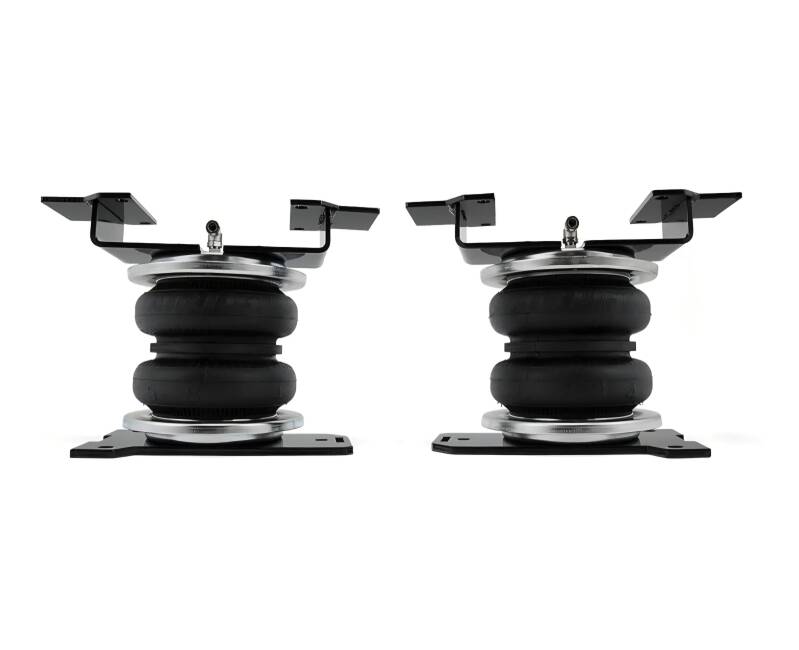
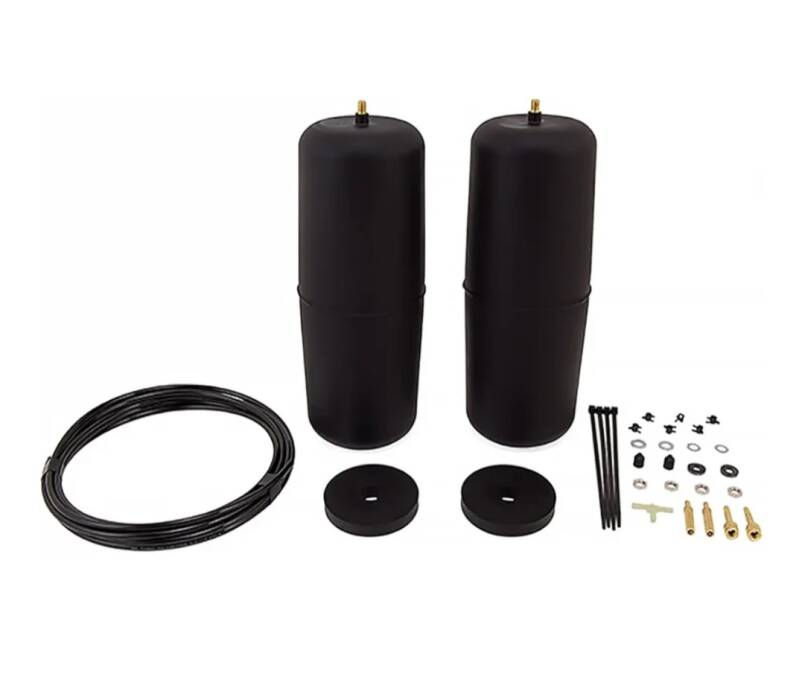

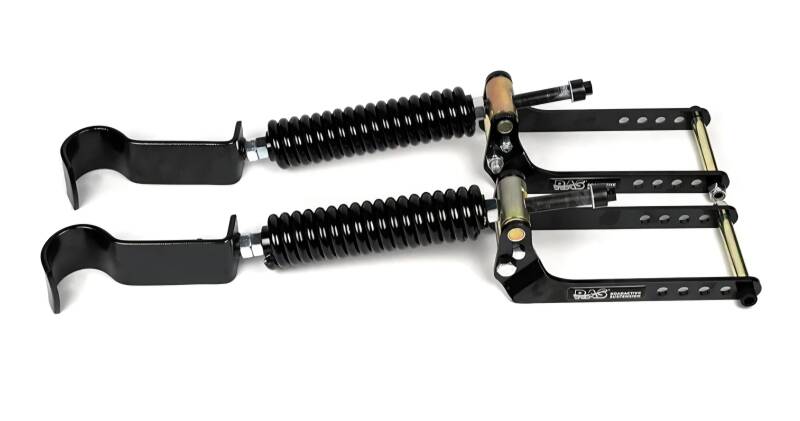
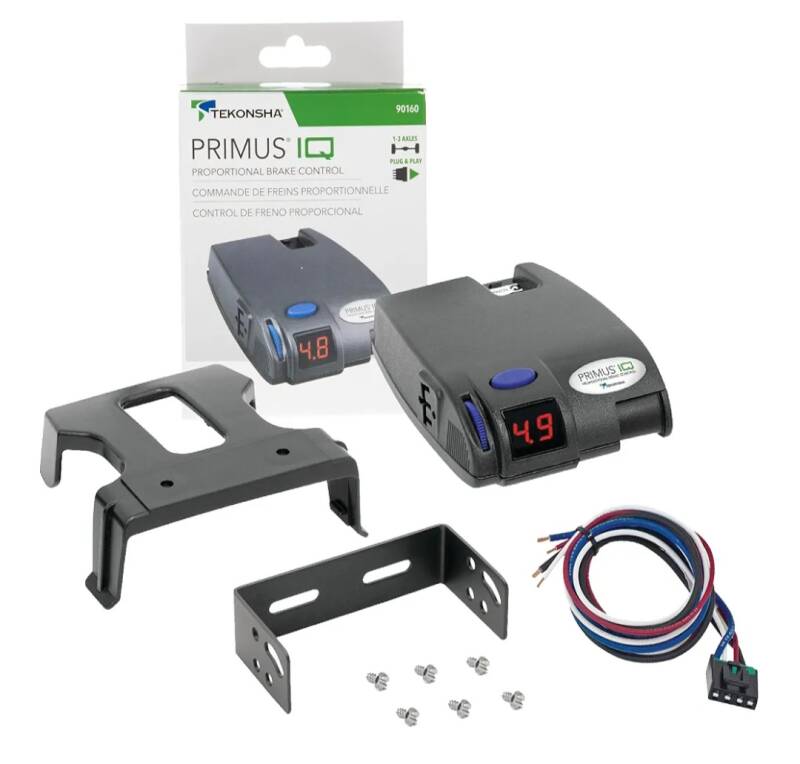

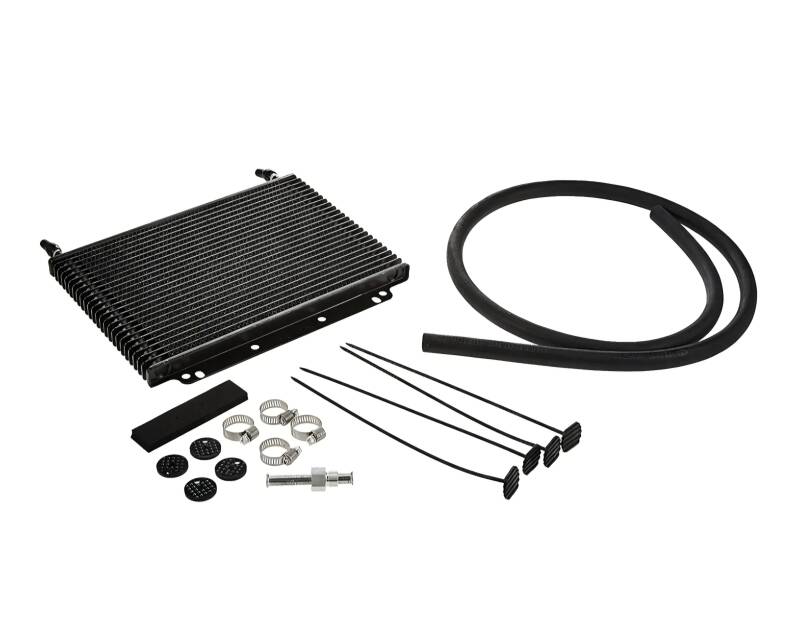
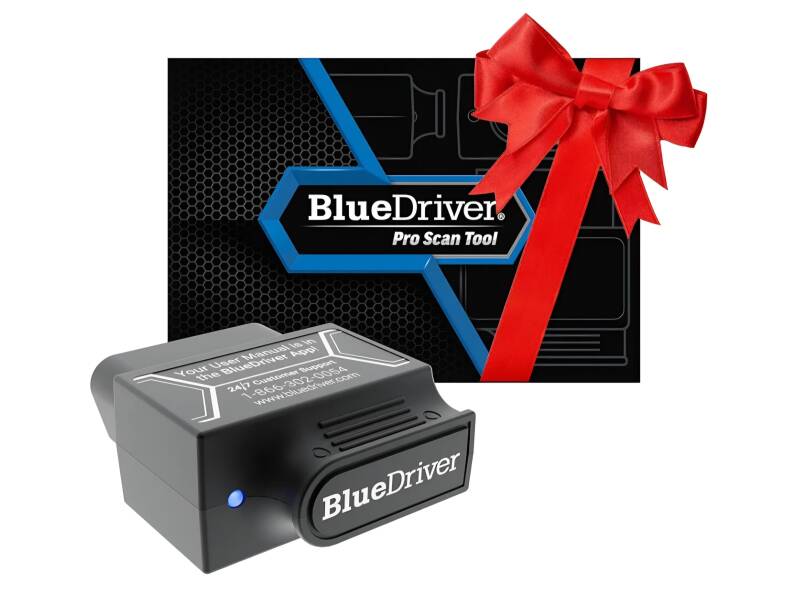
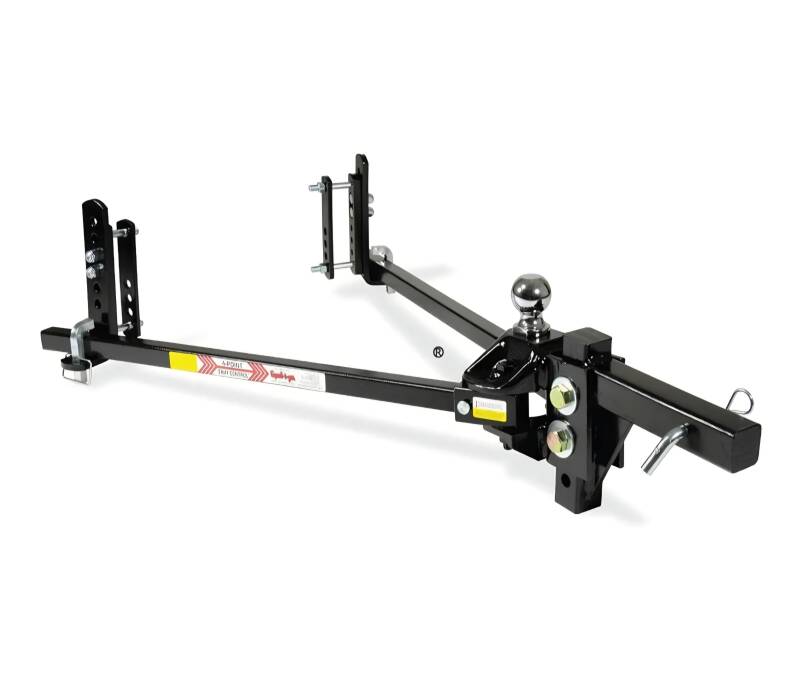
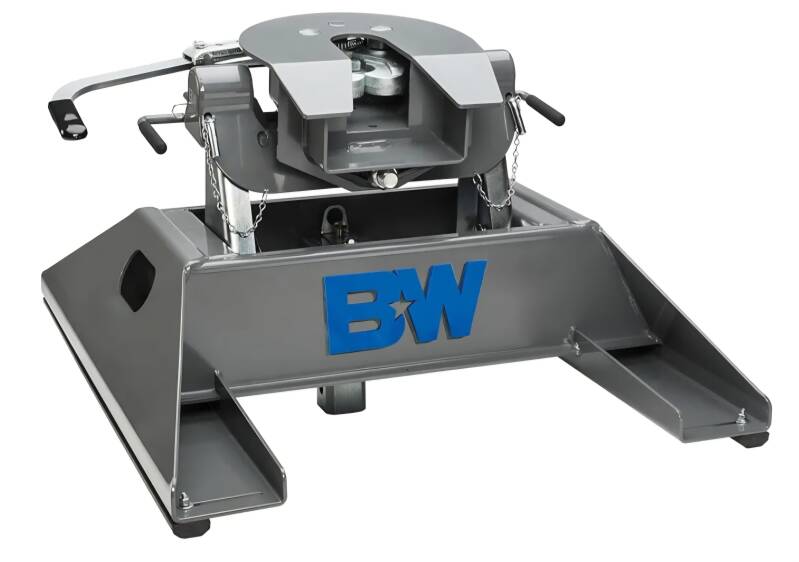
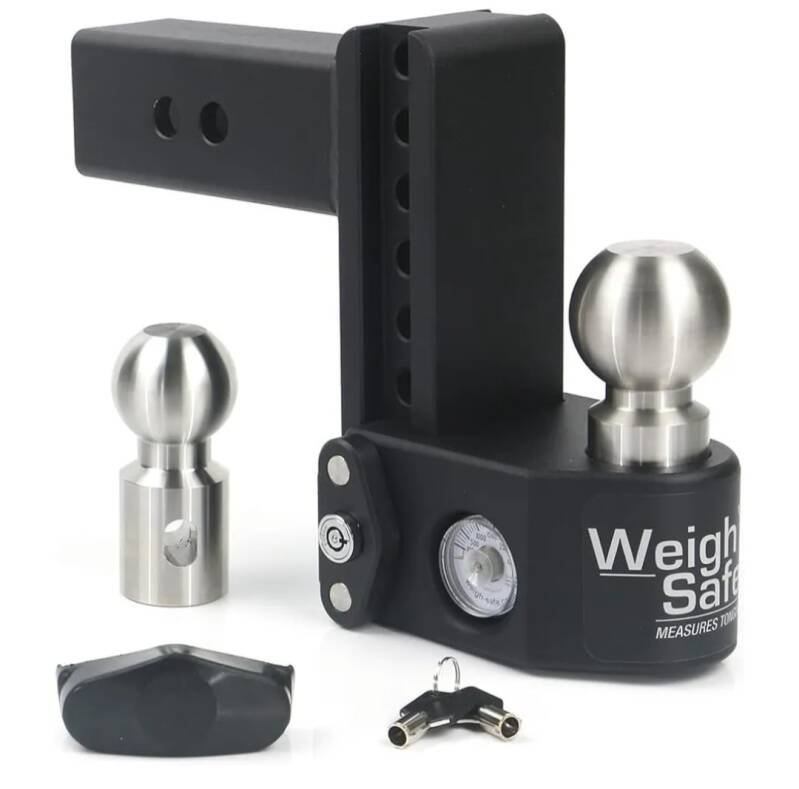

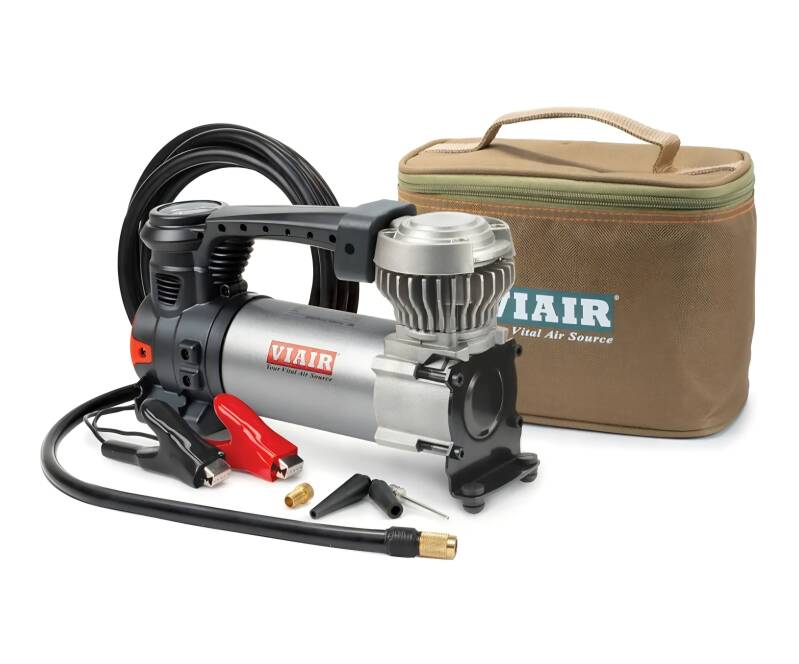
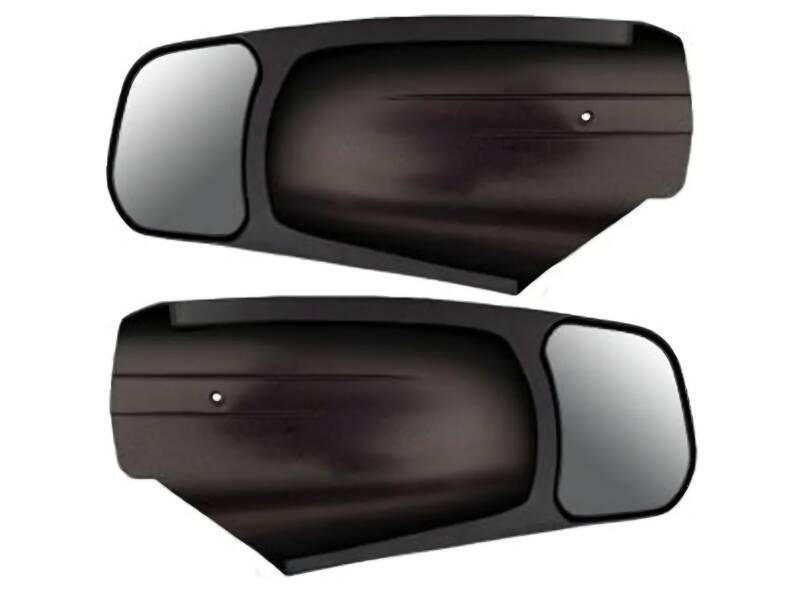

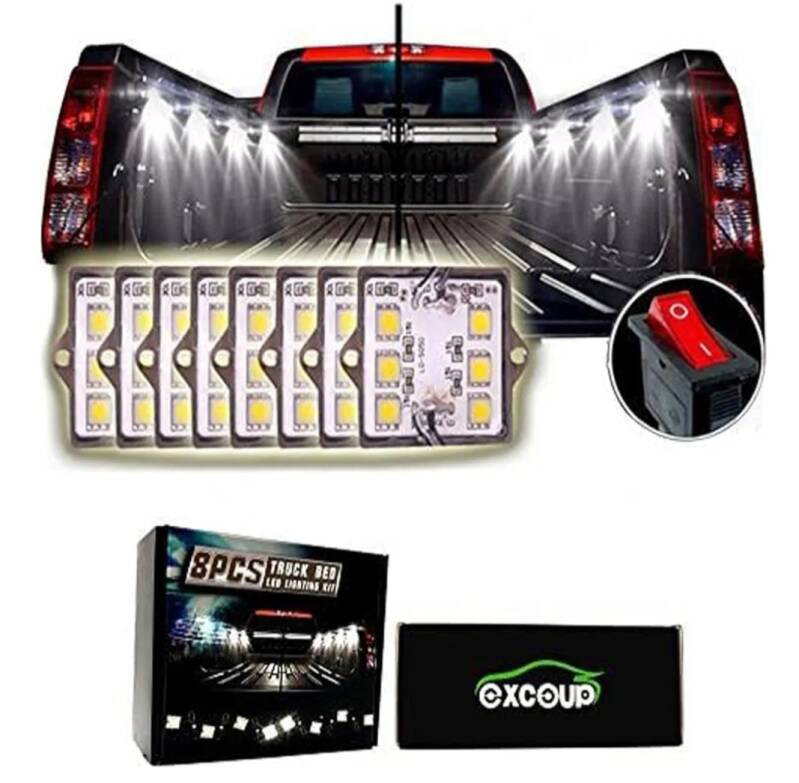
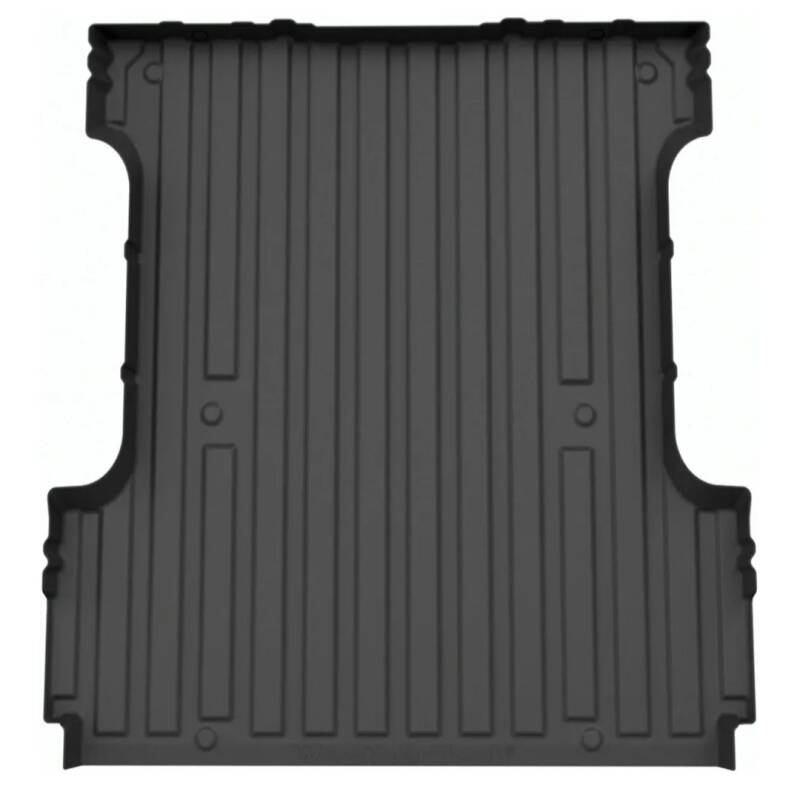
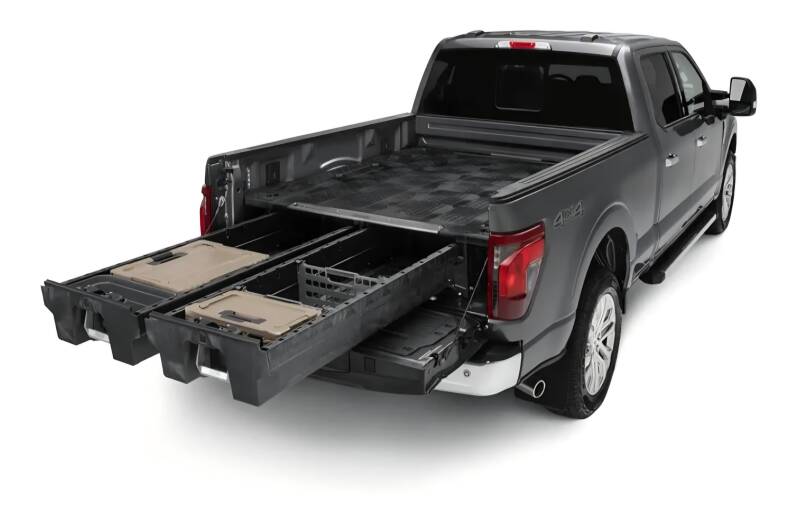
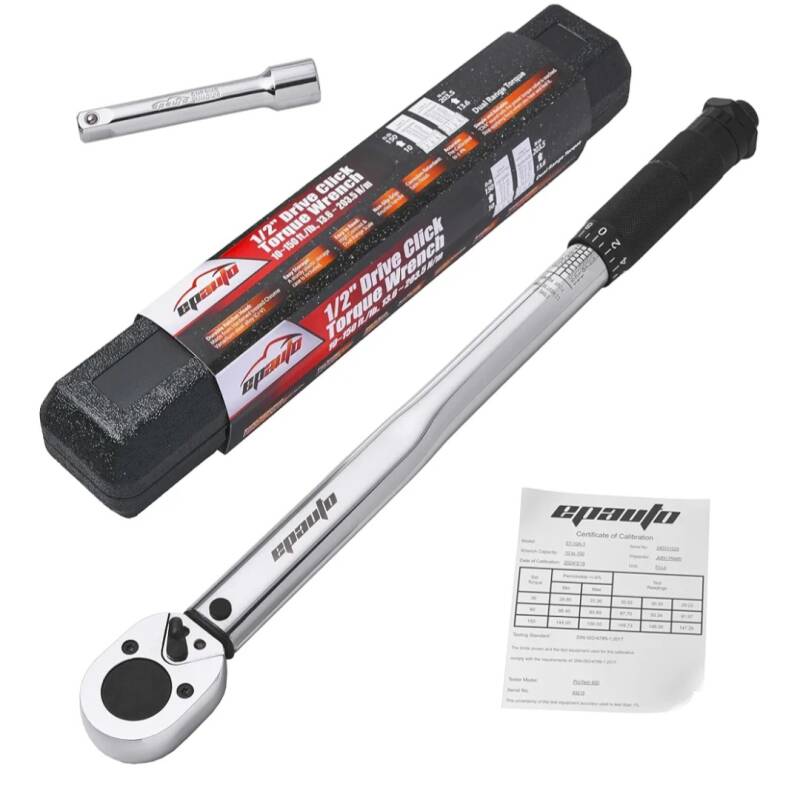



Add comment
Comments